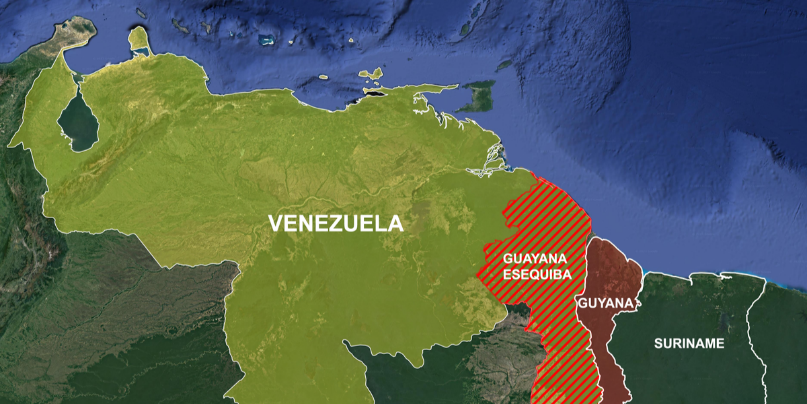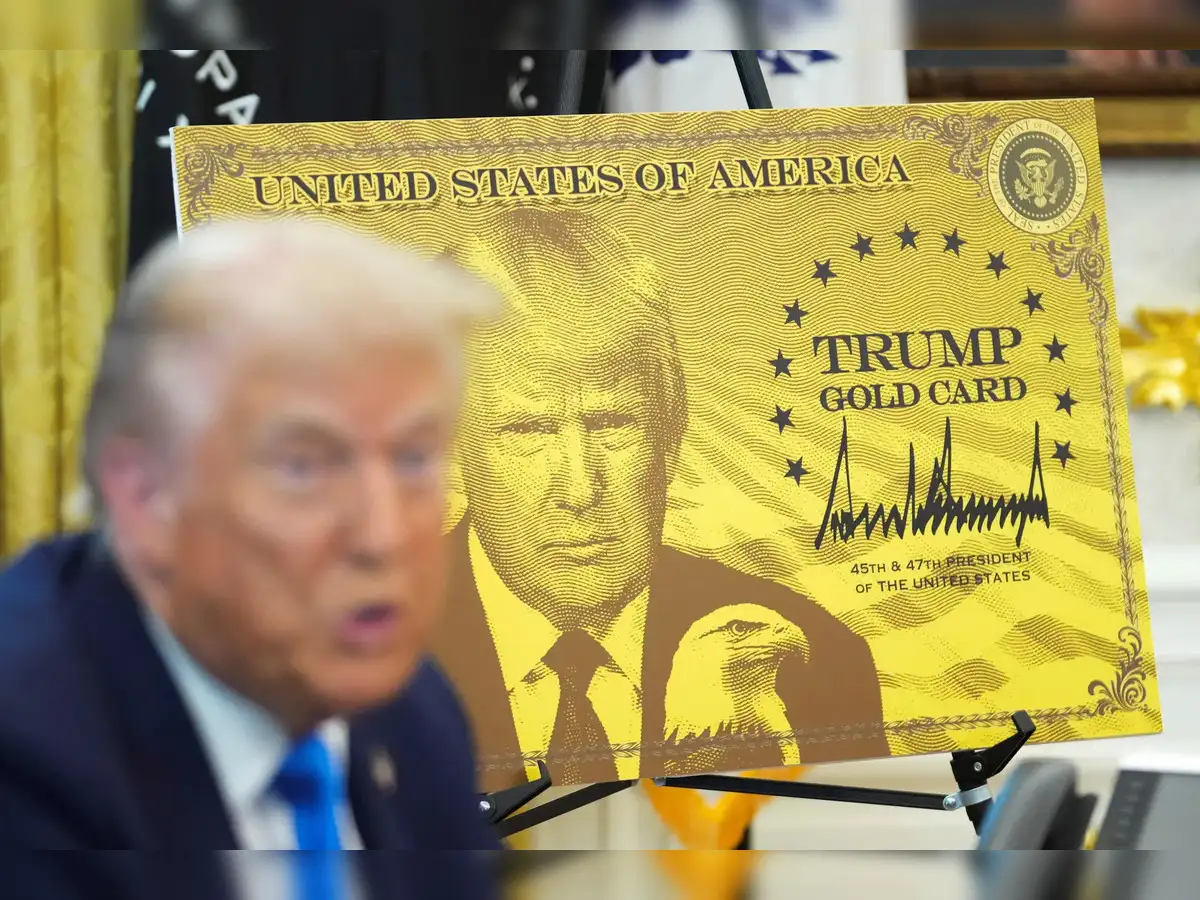





Disclaimer: Copyright infringement not intended.
Context
Tensions between Guyana and Venezuela
Territorial Dispute:
1899 Arbitral Award:
Oil and Natural Resources:
Political Changes and Regional Dynamics:
Diplomatic Efforts:
International Involvement:
Military Posturing:
Way Ahead
Resolving the longstanding territorial dispute between Guyana and Venezuela requires a diplomatic and cooperative approach. Here are some suggestions for a way ahead:
International Mediation:
Bilateral Talks:
Utilize Regional Organizations:
Legal Clarification:
Economic Cooperation:
People-to-People Diplomacy:
Conflict Prevention Mechanisms:
Engage International Community:
Long-Term Vision:
Public Diplomacy:
Final words
|
PRACTICE QUESTION Q. Examine the causes of tensions between Venezuela and Guyana, focusing on the historical, political, and economic dimensions of their longstanding territorial dispute. Answer: The tensions between Venezuela and Guyana primarily stem from a longstanding territorial dispute over the Essequibo region. Here are the key causes contributing to the tensions: Historical Dimension: The historical dimension of the tensions between Venezuela and Guyana can be traced back to the 1899 Arbitral Award, which established the border between British Guiana (now Guyana) and Venezuela. Venezuela has consistently contested the validity of this award, leading to a prolonged dispute over the ownership of the Essequibo region. Political Dimension: Changes in political leadership in both countries have influenced the dynamics of the territorial dispute. Nationalist sentiments and historical grievances have at times been used for political mobilization, impacting the bilateral relationship and exacerbating tensions. Economic Dimension: The discovery of significant oil reserves off the coast of Guyana, particularly in the Stabroek Block within the disputed Essequibo region, has introduced a new economic dimension to the tensions. The potential economic benefits from oil exploration and production have heightened the stakes, making the resolution of the territorial dispute more complex. Challenges in Historical Agreements: The 1899 Arbitral Award, while providing a legal framework for the border, is contested by Venezuela. The challenge to historical agreements and differing interpretations of the award contribute to the impasse. Nationalist Sentiments: Nationalist sentiments, driven by historical narratives and territorial claims, have played a role in shaping public opinion and political discourse. These sentiments can contribute to inflexibility and challenges in finding common ground. Oil Discoveries and Economic Stakes: The economic potential of the disputed region, particularly in terms of oil resources, has heightened the economic stakes for both countries. Competing claims over resource-rich territories can intensify tensions and make resolution more challenging. Political Exploitation: Political leaders in both Venezuela and Guyana have, at times, exploited the territorial dispute for domestic political purposes. This exploitation can hinder diplomatic efforts and contribute to an escalation of tensions. International Mediation Efforts: International mediation efforts, including those by the United Nations and the Organization of American States (OAS), have been employed to address the dispute. However, achieving a consensus that satisfies both parties has proven elusive. Diplomatic Initiatives: Diplomatic initiatives aimed at fostering dialogue and understanding between the two nations have faced challenges due to the complex historical and economic factors at play. Building trust and finding common ground remain ongoing challenges. Impact on Regional Stability: The unresolved territorial dispute between Venezuela and Guyana has implications for regional stability. The potential for military posturing and the economic significance of the disputed region contribute to concerns about broader regional implications. In conclusion, the tensions between Venezuela and Guyana are multifaceted, encompassing historical, political, and economic dimensions. Resolving the longstanding territorial dispute requires addressing these complex factors through diplomatic, legal, and regional cooperation strategies. Way Ahead A way ahead to address the longstanding tensions between Venezuela and Guyana involves a combination of diplomatic, legal, and regional cooperation strategies. Here are key suggestions: Diplomatic Engagement: ·Encourage sustained and sincere diplomatic engagement between Venezuela and Guyana. Facilitate high-level talks to build trust and foster an atmosphere conducive to conflict resolution. International Mediation: ·Advocate for the involvement of neutral third-party mediators or international organizations with expertise in conflict resolution. Entities such as the United Nations or the Organization of American States (OAS) could play a constructive role in facilitating dialogue. Legal Clarification: ·Consider seeking legal clarification on the 1899 Arbitral Award by referring the matter to the International Court of Justice (ICJ). An authoritative interpretation of the historical agreement could provide a foundation for a resolution based on international law. Bilateral Cooperation: ·Promote bilateral cooperation on non-contentious issues. Initiatives that foster collaboration in areas such as trade, environmental protection, and disaster management can help build goodwill and create a positive atmosphere for dialogue. People-to-People Diplomacy: ·Promote people-to-people diplomacy initiatives to enhance understanding between citizens of Venezuela and Guyana. Cultural exchanges, educational programs, and joint projects can contribute to reducing mistrust and fostering positive relations. Economic Cooperation: ·Explore avenues for economic cooperation and mutual benefit. Initiatives such as joint ventures in oil exploration or other industries could provide economic incentives for both countries, creating a shared interest in stability and cooperation. Regional Cooperation: ·Engage regional organizations, such as CARICOM, to play a mediating role and promote regional stability. Regional cooperation can provide a platform for addressing shared concerns and finding common ground. Transparency and Confidence-Building Measures: ·Implement transparency and confidence-building measures to reduce the risk of military posturing and unintended escalations. Open communication and a commitment to peaceful resolution can contribute to building trust. Public Awareness Campaigns: ·Launch public awareness campaigns in both countries to educate citizens about the historical context of the dispute and the benefits of a peaceful resolution. Public support can positively influence the political will for diplomatic solutions. International Community Support: ·Seek support from the international community for a peaceful resolution. Encourage neighboring countries, global powers, and international organizations to advocate for dialogue and diplomatic solutions. Long-Term Vision for Regional Stability: ·Develop a long-term vision for regional stability and cooperation that goes beyond the immediate territorial dispute. Emphasize the benefits of collaboration in addressing common challenges and fostering a more integrated and stable region. Implementing these strategies will require commitment, patience, and a genuine willingness from both Venezuela and Guyana to find common ground and work towards a sustainable resolution. The involvement and support of the international community can also play a crucial role in facilitating a peaceful way ahead. |







© 2025 iasgyan. All right reserved